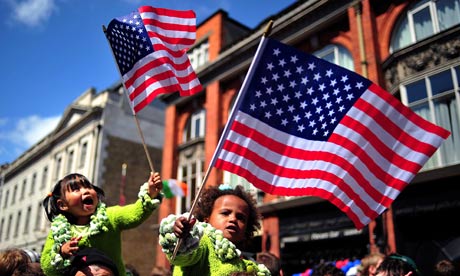Back-to-school 2014 was the first time in U.S. history that more minorities than whites were in public schools. That’s somewhat of an epoch moment, especially for those who believe “America” is for “Americans” — which ignores the entire narrative that the concept of “Americans” inherently involves immigration, but that’s for another story — and now there’s even more intense news.
In 1970, there were about 170 million whites and 30 million minorities in the United States. In 2050, the projection is about 215 million minorities and 180 million whites.
Phrased another way? In about 80 years of American history, the U.S. gained 185 million minorities while at the same time gaining about 10-15 million whites.
Now, there is a lot to this. This is a simple blog post. I’m not going to go insanely deep into anything. Entire books have been written about immigration patterns, and will continue to be. Here’s one thing from CityLab of note, though:
This is good news, demographically speaking, because as it turns out, the white population in the U.S. is aging pretty rapidly. This surge in minority births will arrive just in time to pick up the slack, Frey says. Absent any major change in immigration policy, the future of the American labor market will depend on the next generation of U.S.-born minorities.
(Frey is a Brookings Institute guy, if you were wondering.)
Consider that last sentence for a second: The future of the American labor market will depend on the next generation of U.S.-born minorities.
So who will those minorities be? Glad you asked. Here’s Chart 2:
Asians + Hispanics = 193 percent growth from 2010 to 2050. Insane, no? (In a way, no — because the stereotype has long held that Asians are good for the engineering-type jobs that drive some real wealth in our economy, and Hispanics are “cheap labor.” Those are both stereotypes and not at all the full picture, but that’s where a lot of people would begin the discussion.)
When you consider this stuff, also think about where the jobs might be in 2022.
Now there’s this, in the form of Chart 3:
Look at this — traditionally people think of the suburbs as “white people zone,” but between 2000 and 2010, the largest-single contributing ethnicity to suburban growth was Hispanics (and by a huge-arse margin at that).
That aspect — suburban vs. urban — has ties to politics and the future of cities.
Broadly, from a political standpoint, you’d assume that in the next 40-60 years, we may see an Asian / Hispanic President. Marco Rubio may be a bit before his time, though.
Think about these things, then:
- If this does come with a political shift, that means that from 2008 to 2060 or so, we could elect an African-American, a woman, an Asian, a Hispanic (or one or the other) to the Presidency. That’s something, right?
- The one major quibble I have with how we generally discuss these trends is the term “Hispanic.” It’s easier for research purposes, yes, but Mexicans are different than Argentines are different than Hondurans are different than whoever else. I’m not saying all African-Americans are the same either; everyone is different, honestly, and it goes back to a million other factors. Research can break it down too broadly sometimes, but that’s what research has to do.
- Between the end of WW2 and 2050 will be about 100 years, and you could argue that America will have completely flipped itself in terms of its narrative by then. It’s always been a “land of opportunity” and so on and so forth, but the sheer composition of the population and where they’re at will be totally different in many ways. 100 years isn’t that long of a time in the grand scheme of history.
- If you’re wondering about the over-arching reasons here, there are obviously hundreds. But this chart is a good place to begin
I didn’t get married between 2008 and 2010, but I’d be on this chart too — I’m part of a multi-racial marriage (my wife is Hispanic, which is to say Peruvian).
Bottom line: America is changing, and whites are less and less of the pie. I personally think that’s a good thing, but some conflict and growing pains will certainly emerge in terms of politics, economics, class struggles, etc.





Reblogged this on a political idealist. .